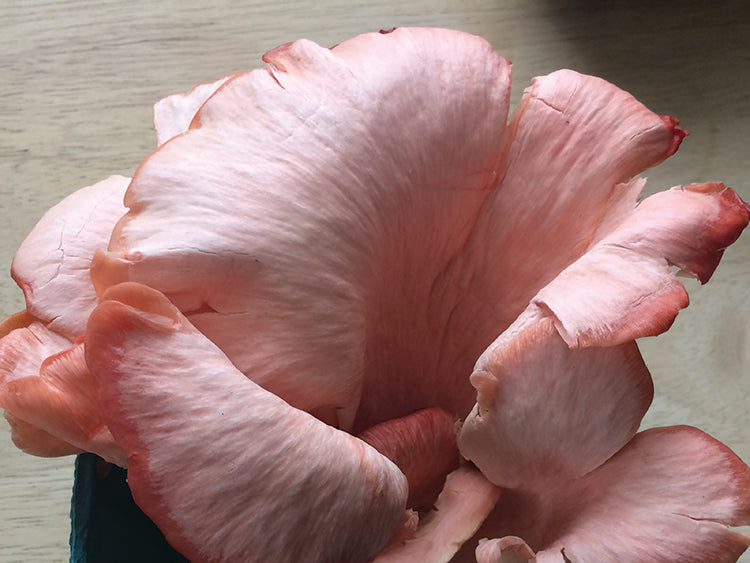Pink Oyster Mushroom Growing Kit
Couldn't load pickup availability
Features:
- Great for cooking
- nutrient-rich
- taste like bacon
Pink Oyster mushrooms were first cataloged by botanist Georg Eberhard Rumphius under the name Agaricus djamor in the 1600s. It was later transferred to the genus Pleurotus by Karel Bernard Boedijn in 1959 and has since been known as Pleurotus djamor.
They are edible mushrooms, and while they taste bitter raw, their flavor transforms into something really lovely and bacon-ish when cooked. Their unique shape and color give an elegant flair to any plate. They are frequently compared to bacon in flavor and have an amazing, meaty texture that is particularly good when fried. Pink Oysters taste sour when they’re uncooked!
Pink oysters are just a bit more delicate than many others in the Pleurotus genus. They prefer slightly warmer temperatures (65-85 degrees Fahrenheit). They tend to have brighter colors when grown at cooler temperatures but larger fruits when grown at warmer temperatures.
- Class: Agaricomycetes - Parasitic, pathogenic, symbiotic, or saprotrophic; most are terrestrial, with few aquatic members; all are mushroom-forming; spore cap has openings; contains 17 orders.
- Order: Agaricales - Most are saprotrophic, some are parasitic on plants (causing root rot), others are mycorrhizal; basidia produced in layers (hymenia) on the underside of fleshy fruiting bodies (basidiocarps), in tubes (boletes), or on gills (mushrooms).
- Family: Pleurotus small to medium-sized mushrooms which have white spores; gilled mushrooms
- Species: P. djamor
This kit is designed to help you learn to grow mushrooms at home without any special gear. They are fairly easy to work with and include instructions for growing them on a bag of precooked rice at home.
Each set includes detailed instructions, your mushroom culture, and a fungi word search. It’s a great project to do as part of your nature or biology studies or as an independent experiment. And they’re great for cooking with/eating or just looking at if you’re the non-mushroom-eating type.
There’s also an additional section to the instructions for using your leftover culture to grow even bigger mushrooms in larger quantities out of a bucket of straw if you’re interested in diving deeper after you grow them the first way.
This is a pretty flexible project age-wise, with the only caveat being that you’ll want adult supervision for the inoculation process for young students so that no fingers get poked. It’s an indoor project. You’ll need a bag of pre-cooked rice, rubbing alcohol, and some paper bandage tape.







